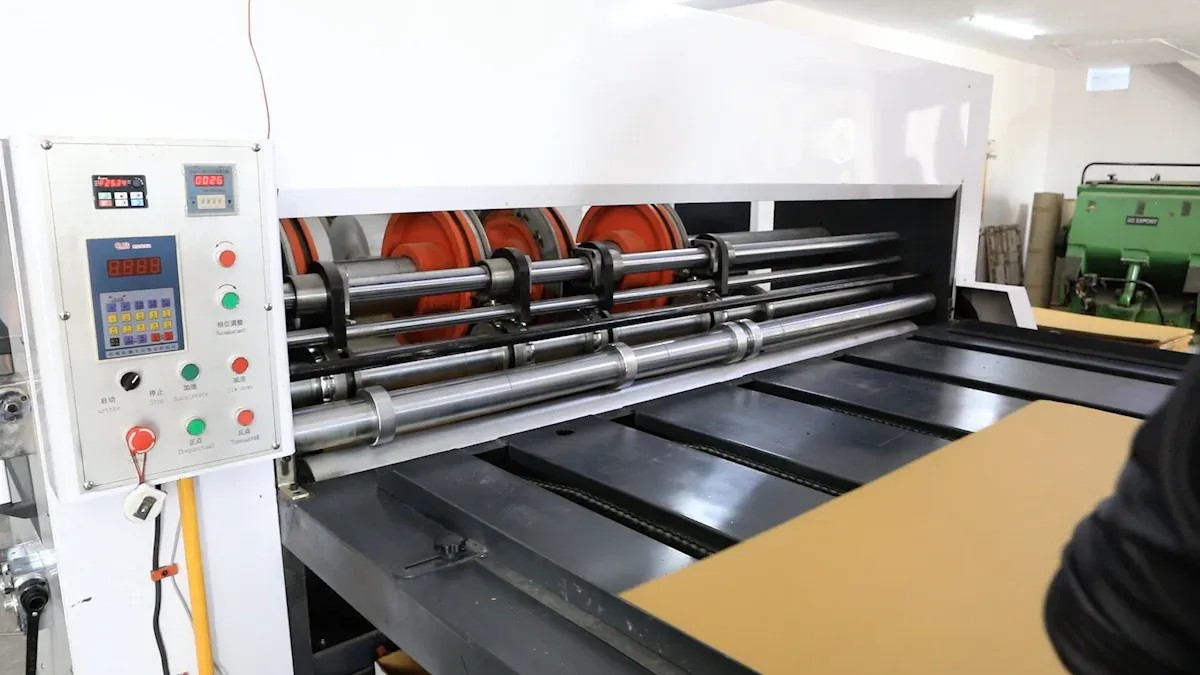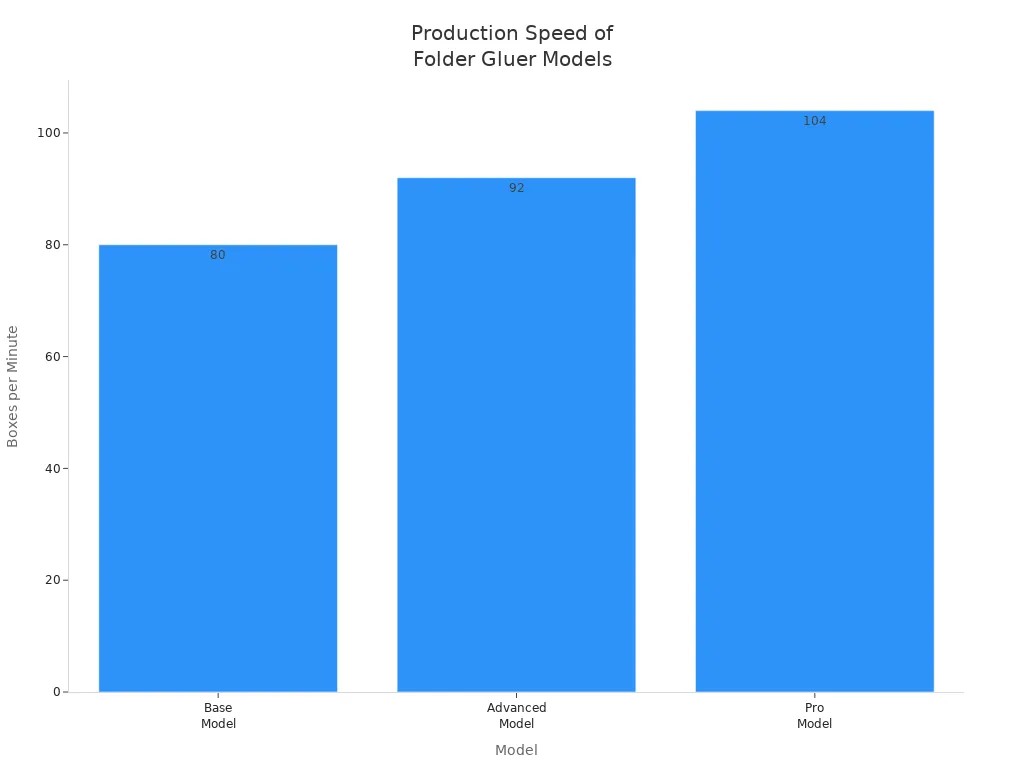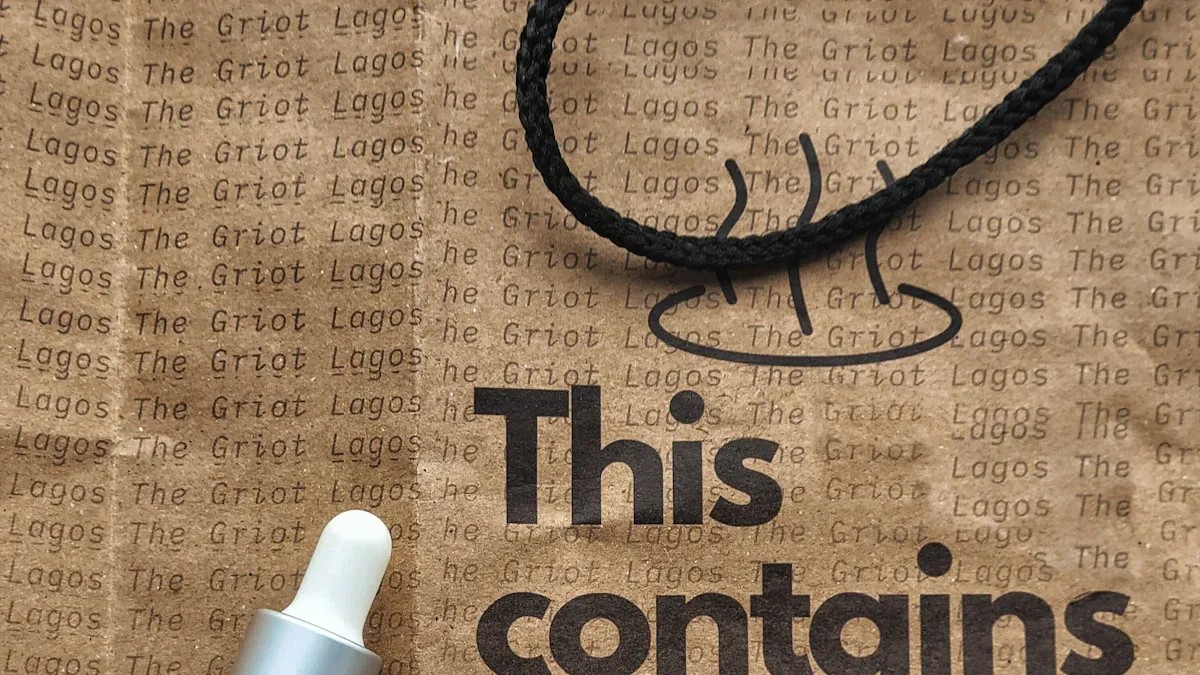Carton producers in 2025 look for machines that deliver speed, versatility, and consistent quality. Popular folder gluer features include high-speed processing, modular upgrades, and compatibility with ancillary equipment. Producers benefit from reduced labor costs, lower maintenance needs, and improved safety. Advanced designs save energy and boost output, helping manufacturers create more cartons efficiently.
Choosing the right folder gluer model involves matching machine capabilities to production needs, considering cost, and evaluating options for future scalability.
2025 Folder Gluer Innovations
Technological Advancements in Folder Gluer Machines
Manufacturers in 2025 have introduced a new generation of folder gluer machines that rely on advanced technology. These machines now feature:
- Machine learning and artificial intelligence (AI) for predictive analysis and real-time decision-making.
- Data analytics tools that provide instant feedback on production performance.
- Automation systems that streamline operations and reduce manual intervention.
- Eco-friendly designs that focus on energy efficiency and waste reduction.
- Integration with the Internet of Things (IoT) for remote monitoring and digital transformation.
The shift toward sustainability stands out as a major trend. Companies now use eco-friendly materials and energy-saving components to meet environmental goals and reduce costs. The market for folder gluer machines continues to grow as consumer demand rises and technology evolves.
Folder Gluer Impact on Production Efficiency
Modern folder gluer machines have transformed carton line productivity. Automation and AI integration allow these machines to run faster and with fewer errors. Key improvements include:
- Robotic systems, such as Heidelberg’s StackStar C and StackStar P, automate the transfer and palletizing of folded stacks, reducing labor needs.
- Automated setup features adjust machine components based on carton size, cutting downtime and manual labor.
- Advanced inspection and glue monitoring systems detect defects instantly, ensuring quality and minimizing waste.
- Human-machine interfaces (HMI) provide real-time performance data, helping operators identify and solve issues quickly.
- Modular machine designs support rapid changeovers, making it easier to handle short runs and diverse packaging formats.
These advancements help companies address labor shortages and improve operational flexibility. Predictive maintenance powered by AI and IoT sensors reduces unplanned downtime, keeping production lines running smoothly. As a result, manufacturers see lower operational costs and higher throughput.
Folder Gluer Enhancements for Carton Quality
Quality control has reached new heights in 2025 folder gluer machines. Automated systems now inspect every carton, replacing manual sampling and reducing human error. Notable enhancements include:
- AI vision systems that detect minor defects, such as improper folding or uneven glue application, in real time.
- High-resolution cameras and laser sensors that spot glue omissions, misprints, and creasing imperfections.
- Glue system controllers that manage adhesive application, tape placement, and panel compression for consistent sealing.
- Inline inspection modules with adjustable vacuum belts stabilize cartons for accurate defect detection.
- Automated ejection systems remove defective cartons without stopping production, reducing waste and maintaining quality.
User-friendly interfaces and digital integration with MES and ERP systems allow operators to optimize processes and maintain consistent output. These features ensure that every carton meets strict quality standards, even at high production speeds.
Review of Leading Folder Gluer Models
Folder Gluer Model Feature Breakdown
Leading folder gluer models in 2025 showcase a blend of automation, speed, sustainability, and digital integration. Manufacturers design these machines to meet the demands of various industries, from food and pharmaceuticals to e-commerce. The following table highlights the most sought-after features in top models:
| Feature Category | Description | Supporting Details | Industry/Region Focus |
| Automation | Fully automatic machines dominate, offering high production speeds (up to 30,000 units/hour). | Touch-screen controls, programmable settings, IoT-enabled remote monitoring, quick setup reduce downtime. | North America, Europe emphasize automation. |
| Speed & Precision | High-speed production (20,000-30,000 units/hour) with precise folding and gluing to reduce errors. | Advanced machines handle complex packaging designs and multiple substrates. | Food, pharmaceuticals, e-commerce industries. |
| Sustainability | Machines compatible with recyclable, biodegradable, and eco-friendly materials. | Over 40% of packaging companies prioritize eco-friendly materials; lightweight and compact designs growing. | Eco-conscious manufacturers globally. |
| Modular & Multi-functional | Modular designs allow easy upgrades; multi-functional capabilities handle complex packaging. | Semi-automatic models for SMEs with modularity for scalability and evolving needs. | Asia-Pacific focuses on cost-effective solutions. |
| Digital Integration | IoT-enabled controls for remote monitoring; touch-screen interfaces reduce setup times by 40%. | Enhances operational efficiency and productivity. | Global trend across industries. |
Note: Fully automatic folder gluer machines now include PLC and touch screen interfaces, servo-motor drives, and remote diagnostics. These features reduce labor costs, increase throughput, and improve reliability.
Folder Gluer Strengths and Weaknesses
Industry experts recognize several strengths in 2025 folder gluer models:
- Machines support recyclable and biodegradable materials, aligning with sustainability goals.
- Flexible designs allow customization for diverse packaging needs.
- E-commerce packaging benefits from durability and attractive finishes.
- Advanced technologies such as AI, IoT, and automation improve efficiency and reduce errors.
However, some weaknesses remain:
- High initial investment costs can challenge small and medium-sized businesses.
- Semi-automatic models require more manual labor, increasing the risk of human error and maintenance needs.
- Larger automatic machines need more floor space, which may not suit all facilities.
User experience varies between models. Semi-automatic folder gluers demand manual feeding and adjustment, which raises labor costs and the chance of mistakes. These machines also need frequent maintenance, such as lubrication and part inspections. In contrast, fully automatic models use digital controls, servo motors, and predictive maintenance software. These features lower labor costs by up to 35%, boost throughput by 40%, and reduce errors by 25%. Maintenance becomes easier with modular designs and remote diagnostics, resulting in less downtime and higher reliability.
Folder Gluer Comparative Analysis of Trending Features
Comparing folder gluer models reveals clear differences in automation, speed, and reliability. The table below summarizes key performance metrics:
| Feature | Base Model | Advanced Model | Pro Model |
| Automation | Fully automatic | Fully automatic + AI optimization | Fully automatic + AI optimization |
| Production Speed | 80 boxes/min | 92 boxes/min (+15%) | 104 boxes/min (+30%) |
| Material Handling | Paper, Plastic | Wood, Paper, Plastic | Wood, Paper, Plastic |
| Material Thickness | Up to 8mm | Up to 10mm | Up to 12mm |
| Glue Type | Cold glue (20% faster drying) | Cold glue with AI glue viscosity control | Cold glue with AI glue viscosity control |
| Safety Features | Guarded rollers, emergency stops | Exceeds OSHA standards | Exceeds OSHA standards |
| Certifications | CE | CE + RoHS | CE + RoHS + ISO 9001 |
| Warranty | 2 years | 3 years | 3 years |
| Energy Efficiency | Electric motor (10kW) | Electric + regenerative braking (8kW) | Electric + regenerative braking (8kW) |
- Fully automatic folder gluer machines deliver stable speed and reliable bonding, supporting consistent quality.
- Mini and semi-automatic series offer compact designs and lower investment, while high-speed models target mass production.
- Semi-automatic machines suit large corrugated boxes but require manual folding.
- Compatibility with printing and die-cutting equipment enables seamless integration into automated lines.
- Simple operation and maintenance procedures further enhance reliability.
Performance and cost also differ by model type. Automatic folder gluers excel in high-speed, large-scale production with minimal labor. Semi-automatic models fit small to medium runs and custom designs but need more manual input. High-speed machines serve consumer goods and e-commerce, while medium-speed models balance flexibility and throughput. Low-speed machines focus on specialized or short-run applications. Recent tariffs in the US have increased costs for imported machines, leading some companies to seek local suppliers.
Tip: When selecting a folder gluer, consider production volume, labor resources, available space, and long-term maintenance needs. Modular and digital features can future-proof investments and support evolving packaging trends.
Practical Considerations for Folder Gluer Selection
Matching Folder Gluer Features to Production Needs
Carton producers must align machine features with their specific production requirements. High-volume operations benefit from fully automated folder gluer machines that run continuously and require minimal operator intervention. Companies producing a variety of box formats often select semi-automated machines for flexibility, even though these models take longer to set up. Complex carton designs, such as crash-lock bottoms or multi-corner cartons, demand advanced folding and gluing mechanisms. Producers should evaluate production volume, carton type, and material quality before choosing a machine. Automated setup features help reduce human oversight and increase efficiency. Integration of printing and folding functions streamlines production and supports custom designs, including tear strips or tamper-evident closures. Future growth projections also play a role in selecting scalable equipment.
Tip: Operators with experience can optimize setup and troubleshooting, maintaining speed and minimizing downtime.
Folder Gluer Cost and ROI Factors
Investment in folder gluer technology impacts long-term profitability. Initial costs vary widely, from entry-level machines suitable for small businesses to advanced, high-speed models for large producers. Total cost of ownership includes maintenance, downtime, and energy consumption. Automation and AI-powered quality control reduce waste and improve productivity, supporting compliance with market and regulatory demands. Companies like Britepak have seen output rates increase by 130% after upgrading to advanced folder gluers, with reduced labor and floor space costs. Sustainability features, such as energy-efficient motors and eco-friendly materials, further enhance ROI over a five-year period. The market continues to grow, driven by e-commerce and food sectors seeking high-speed, automated solutions.
Folder Gluer Scalability and Integration Tips
Scalability remains essential for carton producers planning future expansion. Modular folder gluer designs allow easy customization and integration into existing production lines. Machines support a range of carton styles and board types, from straight-line to crash-lock bottom formats. Automation levels range from manual feeding to fully automatic continuous operation. Advanced control systems, such as servo-driven components and electronic gearing synchronization, enable rapid changeovers and precise alignment. Integration with digital workflows through IoT connectivity and real-time monitoring ensures seamless operation and efficient production. Leading suppliers offer technical support and compact systems, helping producers scale operations while maintaining quality and uptime.
| Scalability Aspect | Description |
| Machine Types | Manual, Semi-Automatic, Fully Automatic; specialized types for various carton styles |
| Automation Levels | Manual to fully automatic feeding, folding, gluing, inspection, and stacking |
| Customization & Modularity | Modular architectures enable rapid changeovers and tailored production volumes |
| Board Compatibility | Machines for corrugated or solid board, with reinforced or fine-tuned mechanisms |
| Key Features for Scalability | Speed, box style compatibility, glue system, size flexibility, after-sales support |
Carton producers in 2025 value machines with automation, precision, and digital integration. Fengchi’s automatic models, like FC-2300Z and FC-3000Z, deliver high speed and versatility for different carton types. Producers praise these machines for consistent quality and easy operation. The table below helps match machine types to production needs:
| Production Scale | Recommended Machine Features |
| High-volume | High-speed, automated, AI-powered fault detection |
| Customization/Short runs | Modular, flexible, quick setup, inline inspection |
| Sustainability | Eco-friendly material compatibility, energy efficiency |
FAQ
What maintenance do folder gluer machines require in 2025?
Operators should check lubrication points, inspect belts, and clean sensors daily. Technicians use predictive maintenance software to schedule repairs. Regular updates for AI and IoT systems keep machines running smoothly.
How do folder gluers support eco-friendly packaging?
Manufacturers design folder gluers to handle recyclable and biodegradable materials. Energy-efficient motors and reduced waste features help companies meet sustainability goals.
Can folder gluers integrate with existing production lines?
Most modern folder gluers offer modular designs. These machines connect easily with printing, die-cutting, and inspection equipment. IoT connectivity allows seamless data sharing across the production floor.
What safety features protect operators?
Folder gluers include guarded rollers, emergency stop buttons, and light curtains. Advanced models exceed OSHA standards. Operators receive training on safe machine use.
How does automation affect labor needs?
Automation reduces manual tasks. Companies need fewer operators for high-speed lines. Staff focus on monitoring and troubleshooting instead of repetitive work.
Post time: Aug-14-2025




